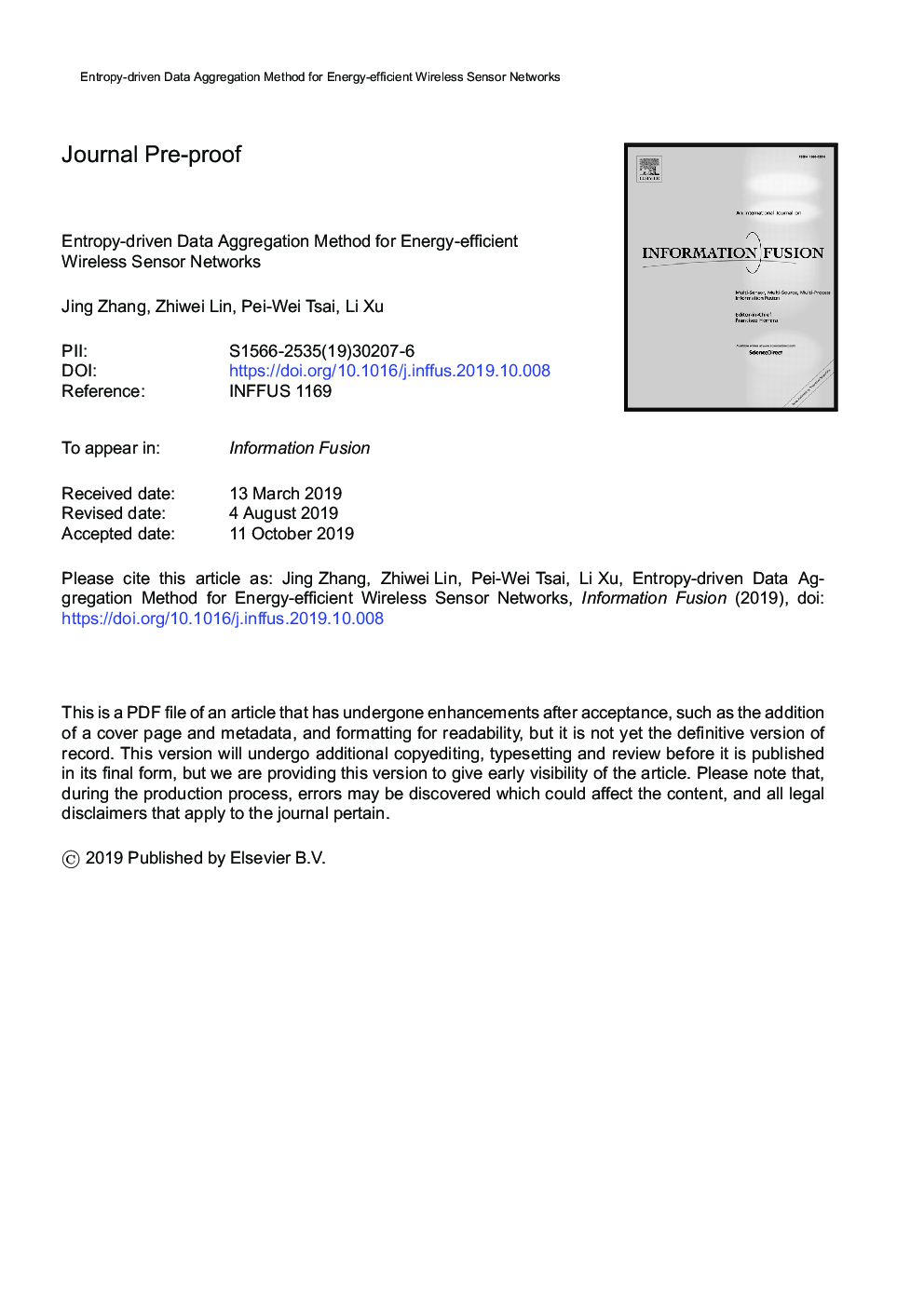| Article ID | Journal | Published Year | Pages | File Type |
|---|---|---|---|---|
| 13436367 | Information Fusion | 2020 | 31 Pages |
Abstract
Data aggregation is one of the essential and fundamental processes in Wireless Sensor Networks (WSNs). When and how to gather data from the sensors to the sink has a direct impact on the lifetime of the WSNs because the energy consumption is proportion to the frequency of data transmission. In general, sensors in a WSN are randomly distributed for creating a massive coverage WSN environment within a short period. Because the sensors nearby the sink are responsible for more data forwarding tasks, they normally have much shorter lifetime than those located away from the sink. Once all sensors nearby the sink run out of energy, the data collected from the terminal sensors can not reach the sink because all established connections to the sink are broken, which is called the termination of a WSN lifetime. This paper proposes a strategy with multiple algorithms for deploying sensors aiming at maximizing a WSN lifetime. The proposed Entropy-driven Data Aggregation with Gradient Distribution (EDAGD) deployment strategy contains three algorithms: (1) multihop tree-based data aggregation, (2) entropy-driven aggregation tree-based routing algorithm and (3) gradient deployment algorithm. The numerical and experimental results indicating that the proposed EDAGD method outperforms the conventional algorithm with the random deployment strategy.
Related Topics
Physical Sciences and Engineering
Computer Science
Computer Vision and Pattern Recognition
Authors
Jing Zhang, Zhiwei Lin, Pei-Wei Tsai, Li Xu,
